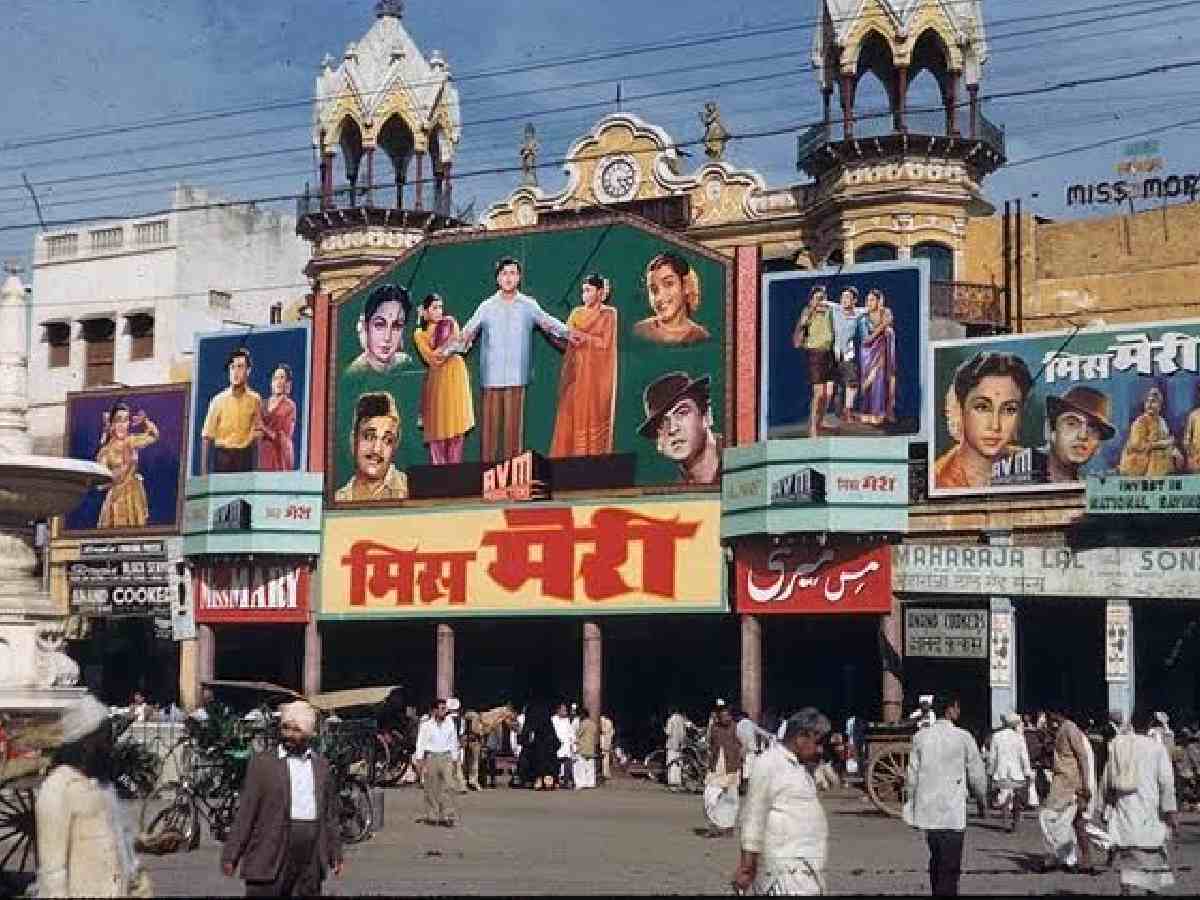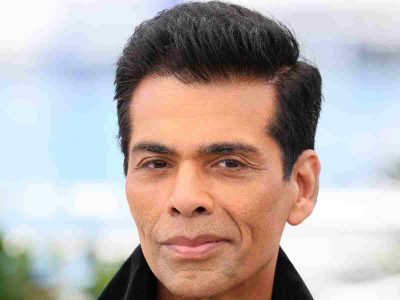Cinemas: As Delhi University (DU) opened its doors for the new academic session on August 28, students from across the country have begun settling in. Hostels, PG accommodations, and other living arrangements are bustling with activity as they welcome their annual influx of residents. The students are now busy building new lives, forging friendships, adjusting to new teachers, shouldering new responsibilities, and navigating a new city.
In addition to their studies, many are on the lookout for new hangouts—whether it’s a canteen, a mall, or a film theatre. Gauri, a student from Patna who joined the Indraprastha College for Women, was particularly disheartened to learn that most of Delhi’s most iconic single-screen theatres have permanently closed their doors.
The DU North Campus no longer boasts the vibrant cinema culture it once had. Time has taken its toll on many of the iconic single screen theatres, leaving only a few still standing.
Amba Cinema, located in Shakti Nagar, remains a favourite among film enthusiasts, including the DU community.
Established in the spring of 1963, Amba quickly became an integral part of North Delhi’s cultural landscape, debuting with director OP Ralhan’s high-strung melodrama Gehra Daag.
Also read: Having meal with Amitabh Bachchan was a dream come true: Faisal Malik
A few years later, in 1967, Alpana Cinema opened in Model Town with the premiere of Humraaz, starring Raj Kumar. The event drew massive crowds eager to catch a glimpse of the legendary actor.
“During our DU days, both Amba and Alpana attracted large numbers of students and faculty, as both were so close to the campus,” recalls Harish Khanna, a former long-time DU professor. However, Alpana shut down a few years ago.
Palace: A majestic memorial
As you traverse the crowded stretch of Roshanara Road from Tis Hazari, passing Baraf Khana and the Ghanta Ghar, a dilapidated building on the left side of the road stands as a silent testament to the bygone era of Palace Cinema.
Surrounded by the bustle of daily life, the theatre’s stillness belies its once-vibrant past. It’s hard to imagine a time when the Palace thrummed with the excitement of moviegoers. Lines stretched for blocks as people scrambled to secure tickets for blockbuster films, and the theatre buzzed with cinephiles during the film festivals it hosted in the 1980s.
The massive crowds that flocked there for the release of Anil Sharma’s Gadar: Ek Prem Katha (2001) now seem like a distant memory.
Not very far away from the North campus was Deep in Ashok Vihar. It was also a popular spot, attracting large audiences, before it too succumbed to the relentless tide of time. Batra Cinema in Mukherjee Nagar was a late addition to the scene but ultimately suffered a similar fate.
“All these theatres were usually bustling with students and other viewers, ensuring a steady flow of entertainment,” says Aruna Mukim, a former member of the Censor Board of India.
Ask any former DU student or faculty member, and they’ll recount tales of their quest for tickets and cherished memories of movie nights in these halls.
Long-time residents still recall Robin Theatre, nestled near the Clock Tower in Sabzi Mandi. Robin was particularly popular among the hardworking residents of the area, who sought respite from their daily grind through the escapism of cinema.
When Prabhanshu Ozha joined Kirori Mal College around 12 years ago, he often visited these theatres. “We, the residents of Gwyer Hall, had no idea about cinema halls in other parts of the capital,” says Ozha, who now teaches at Hansraj College.
“We only visited Amba, Alpana, and Deep to watch movies. Thankfully, Amba is still around.
Chandini Chowk’s cinematic legacy
It is said that when students or even teachers couldn’t secure tickets or find their preferred film at their university’s doorstep, they often turned to Delhi-6—Chandni Chowk.
This area was once home to several cinemas, including Moti Cinema, located opposite the Gauri Shankar Temple. Its screens once vibrated with the charisma of Raj Kapoor in Jis Desh Mein Ganga Behti Hai, drawing huge crowds. Moti Cinema continued to operate until a few years ago.
Kumar Cinema, situated near the Baptist Church, also fell victim to the changing cityscape, as did the Majestic, located just in front of the Sheesh Ganj Gurudwara.
Further down the road towards the Old Delhi Railway Station stood Jubilee Cinema Hall, now also a relic of the past. Rounding off this list of iconic theatres is Novelty, situated on the road connecting Fatehpuri Chowk.
Old cinemas guide Delhi streets
Even though numerous cinemas have faded into history, their memories linger in Delhi’s collective consciousness. The city still evokes the names of Paras, Uphaar, Vivek, and New Amar, even though these theatres are no longer there.
Paras, which opened in 1971 just ahead of Nehru Place, existed long before the area became the bustling commercial hub it is today.
Many older Delhiites still direct auto rickshaw drivers with the phrase “Paras Mod Per Chod do,” meaning “Drop me off at the turn for Paras.” Manoj Kumar’s Purab Paschim premiered here. The theatre closed its doors in 2007.
Uphaar Cinema in Green Park was devastated by a fire on June 13, 1997. The decaying building now stands as a haunting reminder of that tragic day.
Savitri to Radhu via Swarna
Savitri, located in Greater Kailash II, was a social hub where Delhiites gathered to watch movies. Although it has since been renamed ‘Cinepolis,’ locals still fondly refer to it as Savitri, a testament to the enduring power of memories,” says film connoisseur Ravinder Kumar, who has been a frequent visitor.
Meanwhile, movie enthusiasts on the Yamuna side of the city still use the names of Gyanand (Shahdara), Swaran (Krishna Nagar), Swarna (Vishwas Nagar), and Radhu Palace (Laxmi Nagar) as landmarks, even though these theatres are now defunct.
Sanjay Wadhawan, an old East Delhi resident, vividly recalls the struggle to secure a ticket for Laawaris at Gyanand. Radhu Palace had a remarkable run of Nanak Naam Jahaj, which played for an entire year, drawing huge crowds.
All these theatres were popular with students from Shyam Lal College, Shahdara.
Also read: I spent all my time at NSD discussing theatre, actors, and cinema: Swanand Kirkire
Metro runs over New Amar and Vivek
The construction of Delhi’s Metro rail network led to the closure of two popular cinemas: New Amar in Ajmeri Gate and Vivek in Patel Nagar. New Amar was renowned for its repeated screenings of iconic films like Pakeezah, Mughal-e-Azam, Mere Mehboob, Chaudhanvi Ka Chand, and Mere Mehboob, allowing audiences numerous opportunities to revisit these classics.
“Vivek, established in the early 1960s, premiered Nayi Umar Ki Nai Fasal and later showcased blockbuster hits like Phool Aur Patthar, Bobby, and Deewar. It drew audiences from West Delhi, including residents of Patel Nagar, Moti Nagar, Ramesh Nagar, and Rajouri Garden.
Despite their closure, these cinemas remain etched in the city’s memory, serving as geographical reference points for navigating the familiar terrain of West Delhi,” says Harish Yadav, an eminent film historian of Delhi.
Mohini: Tribute to a daughter
“Mohini was inaugurated with a screening of Baiju Bawra in 1952, graced by the presence of Prime Minister Jawaharlal Nehru,” writes Zia ur Salam in his book Delhi4 Shows.
However, the rise of nearby theatres like Kamal and Uphaar, with their superior facilities, eventually led to a decline in Mohini’s popularity.
The theatre closed down in 1980, marking the end of an era. Mohini, established in 1952 in Gautam Nagar by Rai Bahadur Gautam, was named after his daughter.
Archana: A haven for English movie lovers
Delhi has many theatres known for screening English films, but Archana in Greater Kailash I stands out as a beacon for anglophiles.
Inaugurated in 1967, Archana consistently showcased English movies, drawing a large audience eager for a taste of Hollywood.
Bhaskar Rammurty notes that some of Archana’s most popular screenings included the 1977 disco phenomenon Saturday Night Fever and Julia.
John Travolta’s star power was at its peak during that period, attracting hordes of students and film enthusiasts to Archana to witness his captivating dance moves. The theatre closed down in the late 1980s, leaving a void in Delhi’s cinematic landscape. It later became the office of NDTV.
Natraj: A neighbourhood gem
How can West Delhi forget Natraj?
This theatre in Moti Nagar was a neighbourhood gem. Established in the early 1970s by a local Tyagi family, Natraj became a popular spot.
Films like Bindiya Aur Bandook (1972), Dharma (1973), Jai Santoshi Maa (1975), and Azaad (1978) drew enthusiastic crowds. Despite its modest interiors, Natraj enjoyed a loyal following.
“One curious aspect of Natraj was its lack of Punjabi film screenings, despite the predominantly Punjabi population in the area. This forced Punjabi film aficionados to venture to Imperial in Paharganj or Naaz in Jhandewalan,” says Ravinder Kumar.
Delhi’s pride: Naaz
“Its generous seating arrangements offered comfort to diverse audiences. While primarily screening Hindi films, Naaz also hosted Bengali film festivals, along with a selection of English, Punjabi, and Marathi movies,” says Krishan Bhargava, who runs a famous printing press on Rani Jhansi Road.
Films like Roti Kapada Aur Makaan, Neel Kamal, Waqt, and Kaalia performed reasonably well at the theatre. Today, Naaz is part of the city’s cinematic past, its screens silent and seats empty, its charm recalled by those who experienced its magic.
The closure of these cinemas marks the end of an era, a chapter in Delhi’s cinematic history that is now only accessible through memories. “Their echoes resonate through the streets of Delhi, reminding us of a time when cinema was not just entertainment but an integral part of the city’s fabric,” rues DU professor Khanna.





